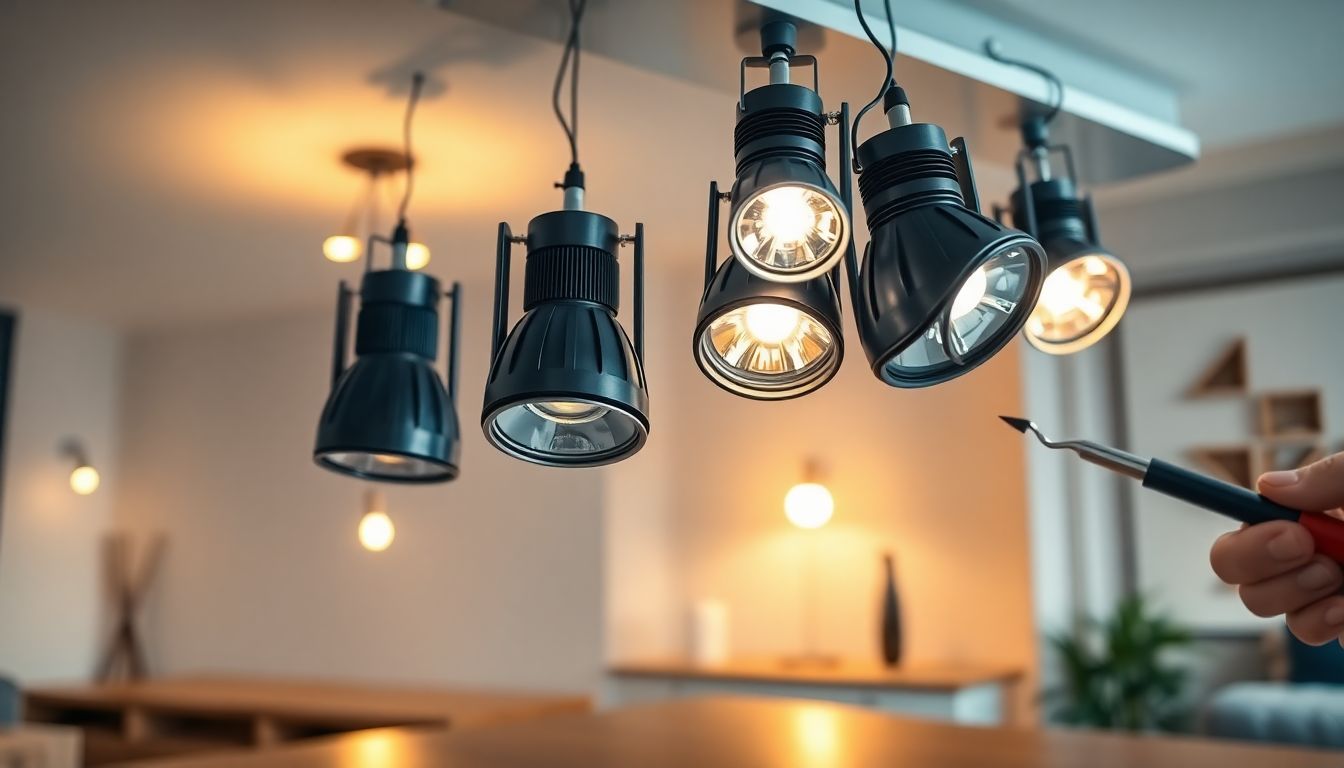
Common Problems with LED Spotlights and How to Fix Them
Introduction
LED spotlights have become a top choice for homes and businesses. They look sleek, save energy, and last longer than older bulbs. But, like any light source, they sometimes develop problems. Knowing what causes these issues and how to fix them can save you time and money. Fixing common LED spotlight issues means better lighting, lower bills, and peace of mind. Many problems are simple to solve if you understand what’s going wrong.
Understanding LED Spotlight Technology
How LED Spotlights Work
LEDs (or Light Emitting Diodes) produce light when electrical current flows through tiny semiconductor chips. Unlike traditional bulbs that heat up, LEDs stay cool and turn electricity directly into light. This process makes them super efficient. They don’t flicker or waste as much energy, which is why they last longer.
Benefits of LED Spotlights
LED spotlights use less electricity and last for thousands of hours. You can keep your lights on for years without replacing bulbs. They reduce your energy bills and help the environment. Market surveys show that more people are switching to LED lighting every year because of these perks.
Common Failures in LED Technology
LEDs may stop working over time due to wear. Manufacturing defects or poor quality can also cause early failures. Sometimes, external factors like heat or voltage surges damage the lights. These issues can lead to flickering, dimming, or total failure.
Common Problems with LED Spotlights
Flickering or Fluctuating Light
Flickering is one of the most common complaints. It can happen if the dimmer switch isn’t compatible or if there are power surges. Loose wiring or poor connections also cause flickering. You’ll notice the light flicks intermittently, which can be distracting.
Dimming or Not Turning On
Sometimes an LED spotlight just refuses to light up. This may be caused by a faulty power supply, a tripped breaker, or loose wiring. Poor installation or aging LEDs can also lead to dimming or complete failure to turn on.
Reduced Brightness Over Time
LEDs slowly lose brightness as they age. This natural process is called lumen depreciation. External factors like heat buildup and insufficient ventilation speed up this decline. You might notice your spotlight dimming even though it’s still technically working.
Color Rendering Issues
If your LED light starts changing color or looks uneven, a few things could be the cause. Incorrect color temperatures can make the light look strange or off. Sometimes, poor quality LEDs produce color shifts or uneven colors over time.
Overheating and Excessive Heat
LEDs generate less heat than traditional bulbs but still need proper cooling. Without enough ventilation or proper heat sinks, they can overheat. Excess heat shortens their lifespan and may cause the light to fail prematurely.
Dead LEDs or Complete Failure
When an LED stops working altogether, it’s often due to internal failure or environmental damage. Sometimes, one component fails, causing the whole light to go dark. Manufacturing defects or power fluctuations are common causes.
How to Troubleshoot LED Spotlight Problems
Checking Electrical Connections
Start by inspecting wiring, plugs, and connectors. Loose or damaged wires are common culprits. Use a multimeter to test voltage and continuity—this helps find hidden faults.
Testing Power Supply and Dimmer Compatibility
Ensure your dimmer or power supply matches the LED specifications. Outdated or incompatible dimmers can cause flickering or dimming issues. Replace or upgrade your power source if needed.
Assessing and Improving Heat Dissipation
Make sure your LEDs have good ventilation. Use fixtures with proper heat sinks or cooling features. Keep the lights in areas with good airflow. This prevents overheating and extends bulb life.
Replacing or Repairing Faulty Components
If a specific LED module is dead, replacing it often fixes the issue. For fixed fixtures, consider consulting a professional for repair. Always buy quality replacement parts to ensure longevity.
Addressing Flickering and Dimming Issues
Try switching to a dimmer designed for LEDs. If flickering persists, use surge protectors to prevent voltage spikes. Regularly check wiring and connections to avoid loose contacts.
Preventive Maintenance Tips
Clean your LED lights regularly to prevent dust buildup. Check connections annually to catch early problems. Good ventilation and avoiding power surges help maximize lifespan.
Expert Recommendations and Best Practices
Lighting experts advise choosing high-quality LEDs from trusted brands. Proper installation is crucial—reading the manufacturer’s instructions can prevent many issues. Always verify compatibility between your dimmer, power supply, and LED products.
Conclusion
Many LED spotlight problems, like flickering or dimming, are easy to fix with simple troubleshooting. Understanding how these lights work helps you spot issues early. Regular maintenance and quality products make a big difference in performance and durability. Don’t ignore early signs of trouble—deal with them quickly to keep your lighting bright and reliable. Remember, when in doubt, consulting a lighting professional can save you time and prevent costly mistakes. Stay proactive and enjoy the bright, efficient light your LEDs can provide.
Leave a Reply